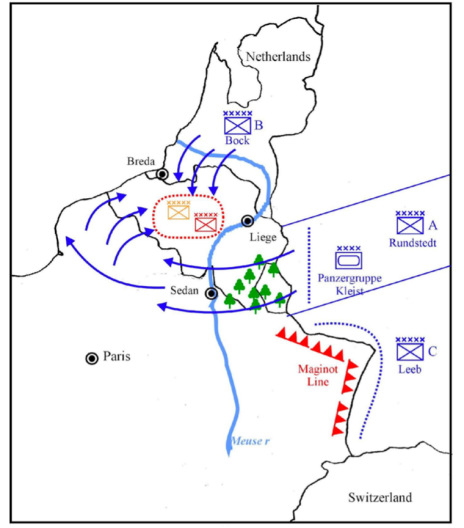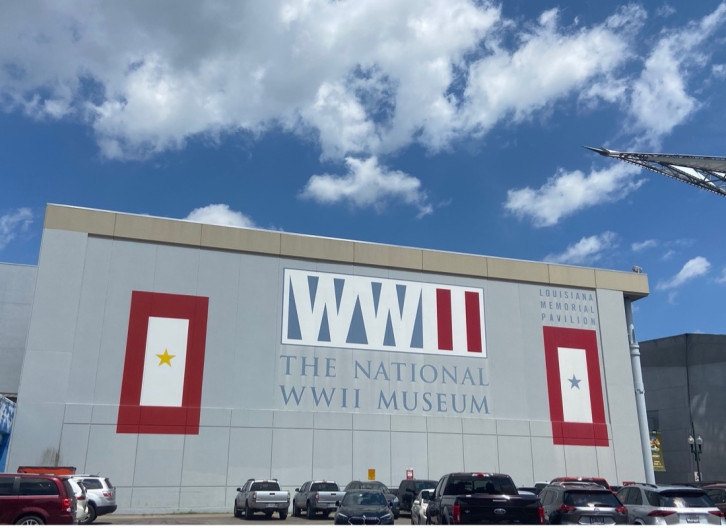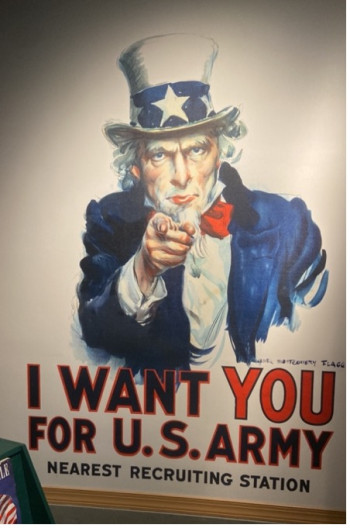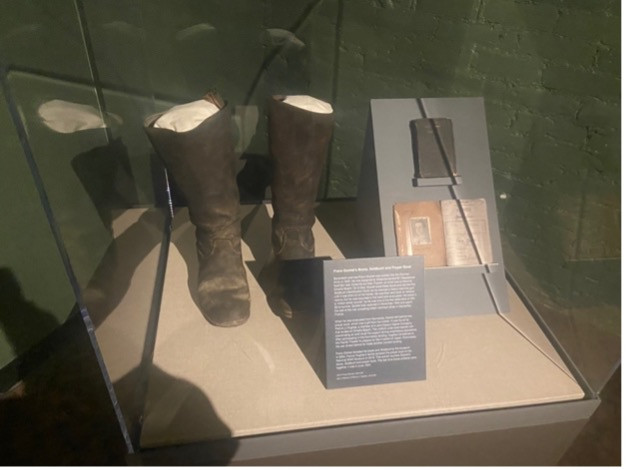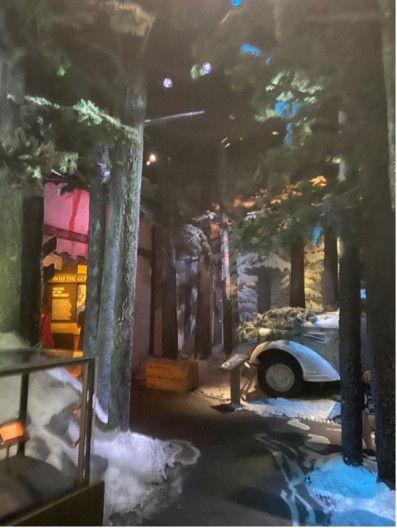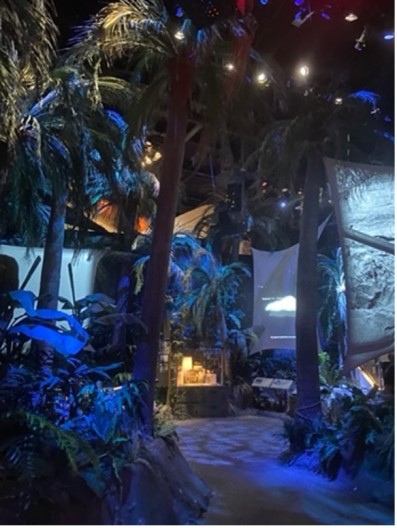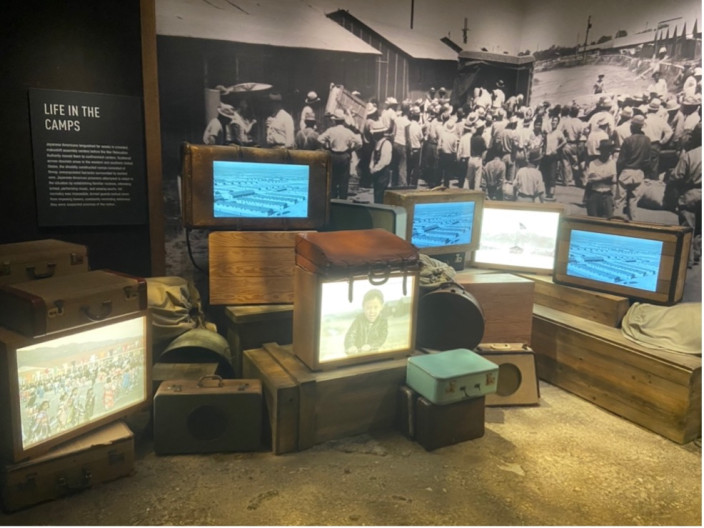In June 2023, I had the privilege of being invited as a Visiting Fellow at the National WWII Museum, the Jenny Craig Institute for the Study of War and Democracy, and the Society for Military History. This invitation granted me the opportunity to partake in the Summer Seminar on Military History, a three-week program dedicated to intensive research, lectures, and training specifically centered around teaching military history and public history of World War II.
The program offered a unique blend of scholarly expertise, comprehensive lectures, and practical training sessions. It was designed to enhance our understanding of military history and equip us with the necessary tools and strategies to effectively convey this knowledge to diverse audiences. The combination of research, instruction, and discussions with fellow participants and esteemed scholars enriched the experience, fostering intellectual growth and expanding our perspectives on teaching and public engagement in the realm of World War II history.
The lectures and seminars
Case Yellow
During the Summer Seminar on Military History, which covered various topics such as indigenous warfare, the Napoleonic army, the American Civil War and conflicts from Vietnam to the Gulf Wars and Afghanistan, I found the discussion on World War II particularly captivating, especially concerning Luxembourg. Under the guidance of Robert Citino, author of “The German Way of War”, we delved into the military strategy and warfare tactics employed in Case Yellow (Fall Gelb).
Case Yellow, also referred to as the Sichelschnitt Plan, encompassed the German military operation that resulted in the invasion of France, Belgium, the Netherlands, and Luxembourg during World War II. It formed a crucial part of the broader German offensive known as the Battle of France. Initiated on May 10, 1940, Case Yellow marked a significant turning point in the war by leading to the occupation of Luxembourg, Belgium, and the Netherlands.
The plan was developed by the German General Staff, with German General Erich von Manstein playing a key role in its conception. The goal of Case Yellow was to defeat France and its allies quickly and decisively by utilizing rapid armored thrusts through the Ardennes region (Luxembourg), a heavily wooded and hilly area that was considered impassable by conventional military forces. The German forces planned to bypass the heavily fortified Maginot Line, which the French had constructed along their border with Germany, and strike at the heart of France. General Manstein criticized the original plan. He proposed a revised plan that focused on distracting the enemy through the Ardennes while the main German effort moved through the Netherlands and Belgium. The use of tanks in the Ardennes was intended as a diversion, while the infantry advanced. The German general staff debated the feasibility of the plan, and there were concerns after the Michelin incident, where maps for Case Yellow were confiscated in neutral Belgium. Despite these challenges, Manstein convinced Hitler to proceed with the plan.1
On the Allied side, the French faced problems due to their failure to incorporate tanks effectively into their strategy. The tanks were too slow compared to the German tanks, leading to coordination issues between tanks and infantry. The French also had uncertainties in their planning, assuming the Germans would revert to the Schlieffen plan and focusing on countering that. The construction of the Maginot Line, which excluded the Ardennes and the Belgian border, aimed to prevent a repeat of the devastation experienced in France during World War I. The German forces outflanked the Allied armies, causing confusion and disarray and the eventual collapse of French military resistance.2
- 1. Erich von Manstein, Lost Victories, 1958, http://archive.org/details/ErichVonMansteinLostVictories.
- 2. Robert Michael Citino, The German Way of War: From the Thirty Years’ War to the Third Reich, Modern War Studies (Lawrence, Kan: Univ. Press of Kansas, 2005).
Case Yellow marked a significant triumph for the German military and a devastating blow to the Allied forces. It showcased the effectiveness of the German blitzkrieg strategy, which relied on the swift and coordinated use of tanks, motorized infantry, and air support. The success of Case Yellow paved the way for the subsequent German occupation of Luxembourg along France, Belgium and the Netherlands.
Through enlightening discussions with Dr Citino, we delved into the intricacies of military strategy, unraveling the carefully orchestrated plan of the German Wehrmacht and the defensive tactics adopted by the Allies. These conversations provided us with valuable insights into the unfolding events that marked the beginning of the war and the subsequent occupation of Luxembourg. By piecing together these puzzle-like details, we gained a deeper understanding of the broader historical context and the significant role played by military strategies in shaping the course of World War II.
From Clausewitz and Mahan
This was just one exemplar of the profound and engaging discussions that took place during my visit to the museum. Our explorations delved into a multitude of warfare tactics, where we analyzed historical overviews and drew insights from influential figures like Claus von Clausewitz and the strategic theories employed by renowned naval thinkers such as Alfred Thayer Mahan.
These discussions provided me with valuable material and insights that I can integrate into my teaching in higher education, particularly in the field of military history. The knowledge and perspectives gained from this experience will enhance my teaching portfolio and enable me to engage students in a more nuanced and comprehensive understanding of the subject matter.
By incorporating these diverse perspectives and exploring the societal ramifications of war, I aim to foster critical thinking and promote a deeper appreciation for the complexities surrounding military conflicts. It is through these efforts that I hope to contribute to the development of well-rounded and informed individuals who can navigate the challenges of the present and future with a broader historical perspective.
The National WWII Museum
The lectures took place within the solemn halls of the museum, surrounded by a vast collection of artifacts and the echoes of historical voices. This immersive setting added an extra layer of depth and meaning to the discussions, allowing us to truly grasp the magnitude of the war and its impact on the world.
The museum itself serves as a captivating subject of study in the field of public history, as it effectively promotes and explains the intricacies of World War II to a wide-ranging audience. It encompasses various permanent galleries, each offering a unique perspective on the war. Notable examples include the Home Front, which explores the experiences of civilians during the war, the Planning for D-Day gallery, which delves into the meticulous preparations for the iconic invasion, and the D-Day Beaches exhibit, which vividly portrays the harrowing realities of the Normandy landings.
One striking feature of the museum is its comprehensive coverage of the different war theaters. Visitors can immerse themselves in the "Road to Berlin" exhibit, which focuses on the European Theater, tracing the path to victory in Europe. Simultaneously, the "Road to Tokyo" exhibit highlights the Pacific Theater and the challenging campaign against Japan. This multifaceted approach allows visitors to gain a comprehensive understanding of the global scope and impact of the war.
The selection of New Orleans as the museum's location is not arbitrary. The museum originated as the D-Day Museum, opening its doors on June 6, 2000, precisely 56 years after the momentous D-Day amphibious invasion of Normandy. The city of New Orleans holds a special significance in this context, as it was the birthplace of the iconic Higgins boats. These boats, crucial for amphibious operations, were designed, built, and tested by Higgins Industries in the city. Moreover, the presence of esteemed historian and author Stephen Ambrose, a native of New Orleans, played a pivotal role in spearheading the museum's establishment.
The visitor
Prior to entering the museum, visitors are presented with a unique and personalized experience in the form of a "dog tag." Each visitor receives an individual tag containing a personal story from a character involved in the war, representing various theaters of operation. These dog tags serve as a connection between the visitors and the individuals whose stories they will follow throughout their journey in the museum. Equipped with screen tag readers dispersed throughout the museum, visitors can engage with the exhibits and "follow" their assigned character's path through the war. This interactive feature allows for a more immersive and personal understanding of the war experience.
The journey through the museum begins in a train-themed area, where the museum's story and exhibition are briefly introduced. This train setting serves as a symbolic representation of the soldiers' journeys, as they would often depart from their hometowns, travel to training camps, and then proceed to ports in locations such as New York or San Diego, where they would embark on ships destined for their deployments in different theaters of war.
By simulating this initial journey, the museum creates a tangible connection between visitors and the soldiers' experiences, setting the stage for the exploration of the exhibits that lie ahead.
The D-Day exhibition
Let us begin our exploration by delving into the immersive exhibition showcasing the Allied Landing in Normandy, famously known as D-Day. This exhibition takes visitors on a journey through the comprehensive preparations leading up to the momentous event and the daunting challenges faced by troops as they landed on the beaches of Normandy.
As you navigate through this section, you will encounter thoughtfully curated corners where the voices of American and German soldiers are heard, providing a unique perspective on the battle. Additionally, a pair of boots belonging to a German soldier serves as a tangible representation of the enemy's perspective, reminding visitors of the multi-faceted nature of war.
This section of the museum provides a comprehensive overview of the complexities and difficulties encountered during the D-Day landing. From the strategic planning conducted by the general staff to the personal insights shared through letters and firsthand accounts of soldiers, visitors gain a deeper understanding of the monumental efforts undertaken from both a top-down and bottom-up perspective. By interweaving historical narratives with personal voices, this exhibition offers a rich and nuanced exploration of one of the most pivotal moments in World War II.
The War in Europe – “The Road the Berlin”
As a researcher from Luxembourg, my focus naturally gravitated towards the war events surrounding my home, particularly the Battle of the Bulge. Within the museum's gallery titled "Road to Berlin," the portrayal of this battle effectively captures the harsh winter conditions and the equipment utilized in such challenging terrain. As visitors traverse through this section, the atmosphere is filled with the distant sounds of cannons and planes, creating an unsettling ambiance. Here and there, voices of soldiers can be heard, including radio transmissions and communication, offering glimpses into their experiences.
The entire setting aims to recreate the visceral nature of war, reminding us that it is neither pleasant nor comfortable. However, the overall arrangement of the scenery may appear cluttered and chaotic, making it somewhat challenging to fully concentrate on the individual voices and memories. Despite this, the staging of the exhibition remains remarkably impressive. It is worth noting that the exhibition tends to focus more on the visual impact, emphasizing weaponry, equipment, and explosive sounds, rather than delving deeply into historical content. Certain areas of the exhibition feature large video screens that explain the events and provide contextual information. However, at times, the immersive soundscape can interrupt the personal voices of the soldiers, potentially diminishing their impact.
The "Road to Tokyo" section follows a similar setup, transporting visitors to the jungles of the Philippines, offering insights into the Pacific Theater of the war. Overall, the museum's portrayal of these war experiences, while visually and atmospherically impactful, could benefit from a more balanced approach that integrates content and personal narratives more seamlessly.
Homefront
The museum places significant emphasis on the home front, recognizing its pivotal role during times of war. It begins by addressing the question of whether to enter the war, highlighting the determination to defeat fascism in Europe and imperialism in Southeast Asia. The exhibition then progresses to explore various aspects of the home front experience, such as the delivery of essential supplies, the establishment of munition factories, and the indispensable contribution of women during the war. One iconic figure that emerges is Rosie the Riveter, who has become a symbol of female empowerment and a pop culture icon beyond the borders of the United States.
One particularly notable aspect of the exhibition is its dedicated focus on the treatment of Japanese Americans, often referred to as the "enemy within." Following the attack on Pearl Harbor, the U.S. government issued Executive Order 9066, which led to the relocation and incarceration of individuals of Japanese descent living on the West Coast. Within a mere week, Japanese Americans were required to report to assembly centers, ultimately losing their homes and possessions. More than 110,000 individuals of Japanese descent, 60% of whom were American citizens, were forcibly relocated to camps scattered throughout the United States.
This section of the exhibition sheds light on a significant chapter in American history, reflecting upon the injustices inflicted upon Japanese Americans during this time. By highlighting the experiences of those affected by internment, the museum addresses an important aspect of the home front and brings awareness to the complexities and consequences of wartime policies.
An American museum
The museum predominantly presents the American experience of World War II, while acknowledging the involvement of other countries and the impact on civilians. It explores the bombings endured by French and Luxembourgish towns in the effort to defeat the Germans, but the focus remains on the American perspective. The war is portrayed as the "Good War" with a patriotic undertone throughout the museum.
One interesting aspect is the museum's active marketing machinery, which promotes it as a top attraction in New Orleans. It embraces the spirit of the era, offering visitors a nostalgic experience by playing swing music from the 1940s and providing opportunities to purchase 1940s-style dresses, clothes, postcards, and other souvenirs.
By creating an immersive environment that evokes the spirit of the time, the museum aims to transport visitors back to the "good times" of the war era. This approach enhances the overall experience and allows individuals to engage with the history and culture of that period.
The museum aims to provide visitors with an immersive experience that begins with a gripping IMAX movie. Through simulated plane rides and the clever use of sensory effects, such as shaking seats and booming sounds, visitors are intended to feel fully engaged in the historical events. However, from a European perspective, this approach may be viewed as excessive, as it could give the impression that the war is being transformed into a spectacle reminiscent of a Hollywood production. Presenting war as a mere „experience“ risks overlooking the profound impact it has on people's lives and the lasting trauma it inflicts upon soldiers and civilians.
While the museum does touch upon significant moments in history, such as the devastating bombing of Hiroshima, it is regrettable that the voices of the victims are not given more prominence. By prioritizing the "experience" aspect, there is a risk of overshadowing the human stories and narratives that deserve greater attention and empathy.
It is important to recognize that war is not just a thrilling adventure or a series of epic battles. It is a complex and harrowing reality that profoundly shapes the lives of those involved. By amplifying the voices of those directly affected by war and highlighting the human cost, museums can create a more balanced and thoughtful portrayal of historical events. This approach fosters a deeper understanding of the consequences of warfare, promoting empathy and reflection among visitors.
While the museum's immersive techniques and focus on an experiential narrative may captivate some, it is essential to strike a balance between entertainment and education.
The museum's concept caters to different types of visitors, including those who quickly skim through the exhibits, those who spend a couple of hours exploring, and others who take their time and may spend up to two days to fully absorb the content. Given the enormity of the war, which spanned multiple continents, involved over 70 million people, and lasted for more than six years, it is challenging to capture every aspect and fulfill everyone's expectations. The Eastern Front, for instance, is not extensively portrayed since the Americans were not involved in that theater. Creating a comprehensive and inclusive representation of such a complex global event is a difficult task, and the museum's approach may not resonate with all perspectives and expectations.
***
As a Visiting Fellow, I am deeply grateful for the invaluable insights and opportunities that this experience has provided. It has allowed me to contribute to the broader discourse on military history and its dissemination to the public. The knowledge and experiences gained during my time at the museum will undoubtedly shape my future endeavors in the field and inform my ongoing research and teaching efforts.




